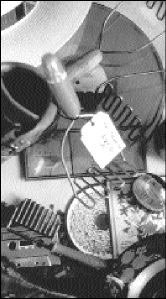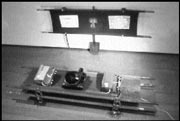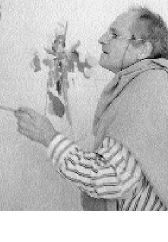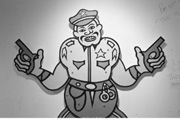EMILY CARR: ECCENTRIC, ARTIST, AUTHOR, GENIUS
Royal British Columbia Museum, 675 Belleville, Victoria, B.C., 1-888-447-7977; $9 11 a.m.-5 p.m. daily ends April 7, 2002
RIGHT OFF the bat I have to confess my bias when it comes to Emily Carr. So partial am I of this turn-of-the-century Canadian’s painting, writing, and her curious personality, that I would encourage anyone to drop everything and seek out any possible opportunity to see her work. That said, I happily report that just such an opportunity has arrived—and then some—as an enormous Emily Carr retrospective and historical exploration of her life has been mounted at the Royal British Columbia Museum in nearby Victoria, B.C. Clipper rides and healthy exchange rates aside, here are the Top Five reasons you’d be remiss not to take the trip over the border.
1. The artwork alone is worth the ride. Depicting B.C.’s majestic landscapes, which she so dearly loved, and documenting the “Indian” way of life that she admired, Carr imbued her intensely painted canvases with sincere respect for her subjects—whether a totem pole or stand of old-growth timber—and it shows. Her work is characterized by its simplicity and directness, the vivid colors she uses, her expressive strokes and bold modernist compositions, and her slightly cubist perspectives.
2. Emily Carr was a cool and wiggy lady. She was a rebellious eccentric who, from girlhood on, defied the conventions of the “boring, small-minded, unctuously pious, tea-addicted, socially constrained Victorians” bent on suppressing her unique spirit. In an account of her own baptism, Carr claims that the parson “presented me kicking to God.” As a young woman, she shocked her family and, according to her, “all Victoria,” by being the first woman to ride her horse “cross-saddle.” She admitted to a “crusty” exterior and could be inhospitable and solitary. Unmarried and living alone in Victoria, she was known to run her errands pushing her favorite pet, Woo, a small Javanese monkey, around in a baby carriage. She surrounded herself with pets rather than people and was known to keep birds, chipmunks, white rats, plenty of dogs, and cats.
3. Carr’s talents were multifaceted. Known primarily for her painting, Carr was also a prolific writer. Her writing, like her painting, is refreshingly straightforward. In fact, she once wrote that she used the same guiding principles to write that she did to paint: “Get to the point as directly as you can; never use a big word if a little one will do.” Her diaries and stories are charming accounts of her childhood and travels. Some of her writings have become important firsthand documentations of life in West Coast Indian villages that Carr visited frequently, coming into rather unique contact with various First Nations.
4. There’s more to see than the 80 framed paintings. Never before has Emily Carr’s story been told so completely. Collaborating with the B.C. Archives and the Art Gallery of Greater Victoria, the Royal B.C. Museum presents Carr’s paintings, sketches, diaries, journals, and letters mingled with historical photographs, vintage films, recordings, and First Nations artifacts (collected during Carr’s travels). The exhibit provides a window into this odd woman’s life, complete with photographs of Carr surrounded by half a dozen pets or riding “cross-saddle”; totem poles she painted in situ; “The Elephant,” a caravan she used for her forays into the woods; and showcases of her letters, doodles, cartoons, and other esoterica.
5. When else this summer are you going to be able to crook your finger for high tea while practicing your Canadian, eh? This isn’t your ho-hum Midwestern Ontario wasteland, this is Canada at its quaintest and most British—one of those places you can get to in a few hours, yet it feels like you’re on the other side of the Atlantic. The Royal B.C. Museum is right downtown and, coincidentally, a mere three blocks from the house where Emily Carr grew up. (The Carr House, as it’s called, is open to visitors and offers walking tours of the neighborhood at 11 a.m. on Saturdays and Sundays; see www.emilycarr.com for more details).








